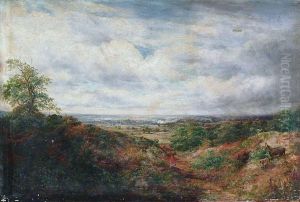Henri Cleenewerk Paintings
Henri Cleenewerk was a 19th-century French artist known for his contributions to painting. Born in 1825 in France, Cleenewerk was a product of the vibrant artistic milieu that defined the era, an environment that was witnessing the transition from the traditional academic art to the burgeoning movements of Impressionism and post-Impressionism.
Although not as widely recognized as some of his contemporaries, Cleenewerk's work did resonate with the artistic trends of his time. He received his training in the fine arts at esteemed institutions in France, which at the time was the epicenter of the art world. This training was rooted in the classical traditions of painting, which emphasized the importance of drawing, the study of the human form, and the mastery of perspective and chiaroscuro.
As Cleenewerk's career progressed, he began to develop a personal style that, while reflective of the techniques he was taught, also showcased his unique artistic voice. His oeuvre included landscapes, portraits, and historical scenes, which were typical genres of the period. His works were known for their attention to detail, use of color, and the delicate interplay of light and shadow.
Despite his skill and the quality of his work, Henri Cleenewerk did not achieve the same level of fame as some of his peers, such as Claude Monet or Pierre-Auguste Renoir. Nevertheless, his paintings were exhibited in several salons and exhibitions, garnering respect among art critics and the public alike.
Henri Cleenewerk passed away in 1904, leaving behind a legacy that, though it may not have had a profound impact on the trajectory of art history, still represents the rich tapestry of 19th-century French painting. His works continue to be appreciated by art collectors and historians, serving as a testament to the diverse artistic expressions of the period.
